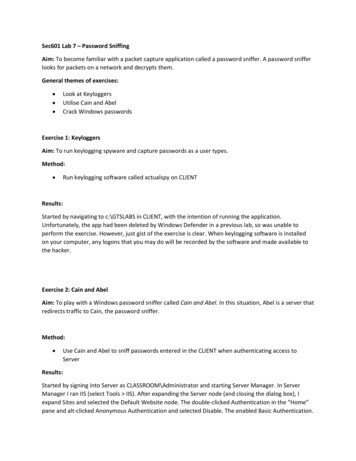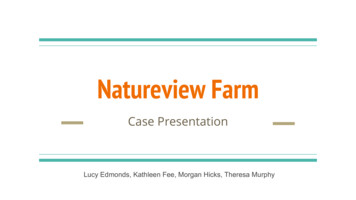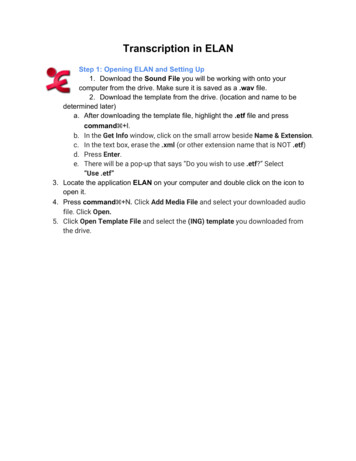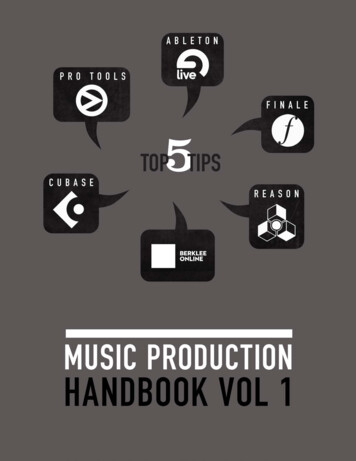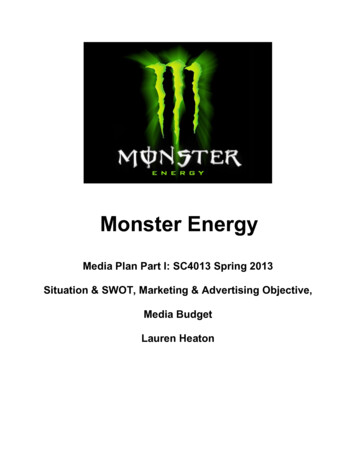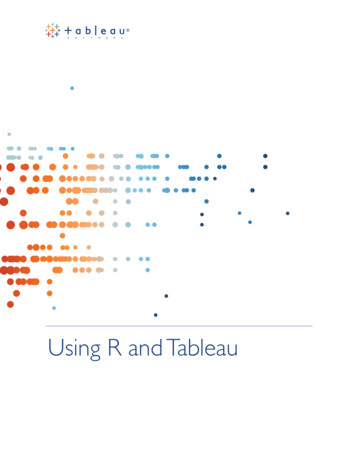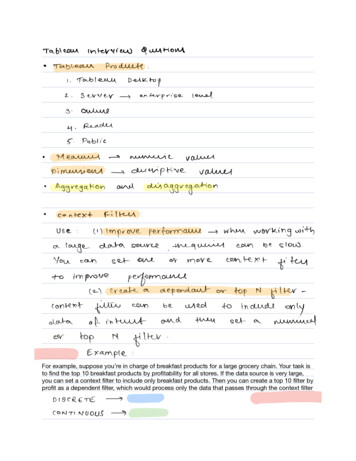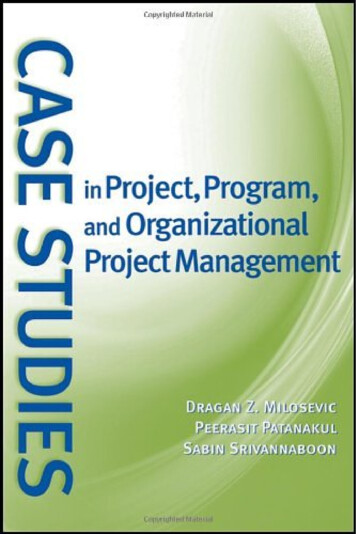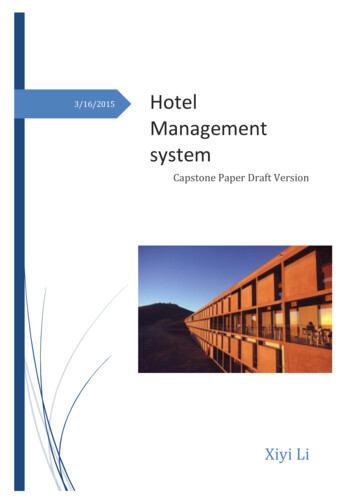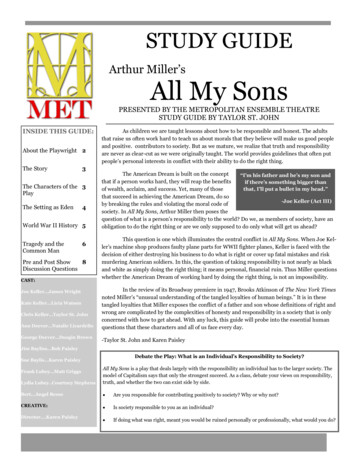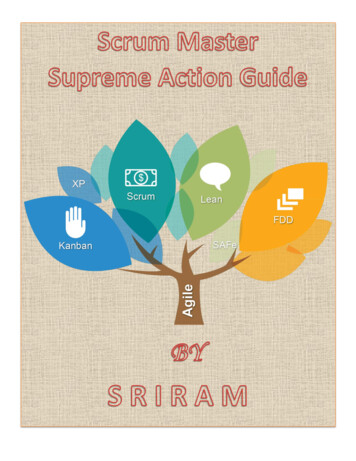
Transcription
PrefaceI have been involved in IT Software development since 1997. I have a unique combination of process,technical and industrial skills. As a Certified Scrum Professional (CSP), ICAgile Certified Professionalin Agile Coaching (ICP-ACC), SAFe Program Consultant (SPC 4) I have expert level of knowledge inagile and technology practices such as Bigdata-Hadoop, Java, SharePoint & .Net with this combinationI can help process and technology people, understand the world. Worked in India, USA, and UK whichcreates a global experience and awarded as a best agile coach in MNC. Dedicated “Scrum MasterSupreme Action Guide” book to my Agile Guru’s, my family members, friends and Scrum professionalsacross the world. Scrum Supreme Action Guide made handy and recollect everything at one shot.Organization of this BookScrum Master Supreme Action Guide is designed to make you to success in the Scrum Master interviewby providing valuable discussion on Scrum Master, Agile Coach, Agile Transformations, ScrumExercises & videos. Practice Certification test to achieve Certified Scrum Master Certification. Theprogressive elaboration of Scrum Master knowledge to an Agile Coach is awesome. Enjoy Reading!Table of ContentsLesson 1Scrum Master Discussions2Lesson 2Agile Coach Discussions84Lesson 3 Agile Transformation118Lesson 4Scrum Exercises123Lesson 5Scrum videos143Lesson 6Certified Scrum Master– Practice Test146Scrum GurusKen SchwaberJeff SutherlandMike CohnScrum Master Supreme Action GuideNanda LankalapalliSriram BalasubramanianPage 1
Lesson 1 Scrum Master DiscussionsTell me about your introduction before proceed with? Worked as an Scrum Coach Agile coach SAFe coach in MNC with 16 years of IT experienceout of which 8 Years have been dedicated to Agile, Scrum & SAFe practices at enterprise level My Agile Certifications are - ICAgile Certified Professional in Agile Coaching (ICP-ACC) & SAFeProgram Consultant (SPC 4), Certified Scrum Professional (CSP) I am expertise in Scrum Coaching, Agile Coaching, training and mentoring & Lead a proposalwith a big win to generate more business value, trained more than 1000 Professionals on AgilePrinciples & Practices, XP, Scrum, Kanban, Scaled Agile framework by making the organizationas an Agile Organization, build agile culture across 3 continents as an agile coach for distributedteam Review how teams are conducting Sprint Planning, Scrum Daily calls, Sprint Review and SprintRetrospective ceremonies and provide feedback., track team velocity for teams after eachsprints and plan to Increase it each quarter using Graphs like CFD (Cumulative FrequencyDiagram) Perform Project Management duties like Client Interaction, Estimations, Resource Handling anddelivering on time. My agile websites and books are released by Syntel CEO & President -Rakesh Khanna &Temenos CEO - Susan Gibson. I have published my agile books in amazon such as HandyAgile, Agile A Key of Success, Scrum Alliance Professional, Agile Coaching, SAFe Q&A Having good experience in technology such as Java, Big data, SharePoint & .Net projects tosupport the development teamWhat are the good qualities of Scrum Master?The good qualities of Scrum Master are: KnowledgeableScrum Coach Sample ResumeScrum Coach.docxScrum Master Supreme Action GuidePage 2
1.1 Introduction to ScrumWhat is Agile Manifesto? (Agile 4 Values)Meeting at Snowbird resort by 17 software pundits and light weight methodologists, February 2001.Created “Agile Manifesto”We are uncovering better ways of developing software by doing it and helping others do it. Throughthis work we have come to value. i.e., Agile Values Individuals and interactions over processes and tools Working software over comprehensive documentation Customer collaboration over contract negotiation Responding to change over following a planThat is, while there is value in the items on the right, we value the items on the left more.Author: - Kent Beck, Mike Beedle, Arie Van Bennekum, Alistair Cockburn, Ward Cunningham, MartinFowler, James Greening, Jim Highsmith, Andrew Hunt, Ron Jerries’’, Jon Kern, Brian Marick, RobertC. Martin, Steve Mellor, Ken Schwaber, Jeff Sutherland, Dave ThomasAgile Manifesto In detailIndividuals and interactions over processes and tools Individuals and interactions are most important Processes and tools will be needed on projects Projects are completed by people not processes and tools Agile projects are people drivenWorking software over comprehensive documentation Agile project need to deliver value Value is about the purpose or business need the project aims to deliver Documentation is barely sufficient Documentation is done just in time –as the last responsible moment Documentation might also be just becauseoIndustry requirements Organizational requirementsScrum Master Supreme Action GuidePage 3
Customer collaboration over contract negotiation Agile is flexible, accommodating, and willing to change Contracts are often rigid and uncooperative Agile contracts must accommodate change There’s a difference between being right and doing the right thingResponding to change over following a plan Agile welcomes change Predictive projects plan everything in advance Agile projects have lots and lots of many changes Agile projects have uncertainty up frontWhat are Agile Principles? (Agile 12 Principles)NoPrincipleShortened Version1Our highest priority is to satisfy the customers through early andcontinuous delivery of valuable softwareCustomerSatisfaction2Welcome changing requirements, even late in development. Agileprocesses harness change for the customer's competitiveadvantageWelcome Changes3Deliver working software frequently, from a couple of weeks to acouple of months, with a preference to the shorter timescaleDeliver Frequently4Business people and developers must work together dailythroughout the projectWork with business5Build projects around motivated individuals. Give them theenvironment and support they need, and trust them to get the jobdoneMotivated People6The most efficient and effective method of conveying information toand within a development team is face-to-face conversation.Face to FaceCommunicationScrum Master Supreme Action GuidePage 4
7Working software is the primary measure of progressMeasure SoftwareDone8Agile processes promote sustainable development. The sponsors,developers, and users should be able to maintain a constant paceindefinitelyMaintain SustainablePace9Continuous attention to technical excellence and good designenhances agilityMaintain Design10Simplicity –the art of maximizing the amount of work not done isessentialKeep it Simple11The best architectures, requirements, and designs emerge fromself-organizing teamsTeam createsArchitecture12At regular intervals, the team reflects on how to become moreeffective, then tunes and adjusts its behavior accordinglyReflect and AdjustWhat are methodologies available in Agile?MethodologiesInformationScrumMost popular agile methodsStrongly codified set of ceremonies, roles and artifactsXPForemost of agile methodologies & Strong set of technical practicesLean KanbanLean - Set of principles evolved from manufacturing to eliminate wasteKanban literally means a “signboard” or “billboard” and it espouses the useof visual aids to assist and track production.Lean Kanban integrates the use of the visualization methods as prescribedby Kanban along with the principles of Lean creating a visual incrementalevolutionary process management system.DSDMOffshoot of Rapid Application Development MethodologyCost Quality/time fixed and requirements prioritized as per MOSCOWScrum Master Supreme Action GuidePage 5
CrystalPrinciples are categorized according to criticality and size of the project.Critical Levels: Comfort (C) Discretionary Money Essential Money (E) Life (L)Feature DrivenDevelopmentPlan Develop and build by featureAdaptive SoftwareDevelopment (ASD)ASD are constant adaptation of processes to the work at hand, provision ofsolutions to problems surfacing in large projects, and iterative, incrementaldevelopment with continuous prototyping.Agile UnifiedProcess (AUP)AUP combines industry-tried-and-tested Agile techniques such as TestDriven Development (TDD), Agile Modelling, agile change management, anddatabase refactoring, to deliver a working product of the best qualityDomain-DrivenDesign (DDD)Domain-driven design is an Agile development approach meant for handlingcomplex designs with implementation linked to an evolving model.Test DrivenDevelopmentTest Driven Development is a software development method that involveswriting automated test code first and developing the least amount of codenecessary to pass that test later.Definition of Scrum?A framework within which people can address complex and adaptive problems while productively andcreatively delivering products of the highest possible value.Scrum Master Supreme Action GuidePage 6
Scrum uses a methodology called the scrum framework. Scrum is a framework for developing andsustaining complex products. Scrum is a framework with agile principles and values. Scrum wasdiscovered from the Toyota Car Product Implementation by Jeff Sutherland and Ken Schwaber. Scrumwas also taken from Rugby game.Scrum is light-weight, makes easier to understand but hard to master. Scrum is flexible and allowsother agile practices like XP and Lean to plug-in.The scrum framework is a set of practices, roles and responsibilities, events, artifacts, and rulesScrum processes enable organizations to adjust smoothly to rapidly-changing requirements, andproduce a product that meets evolving business goals. An agile Scrum process benefits theorganization by helping it to Increase the quality of the deliverable’s Cope better with change (and expect the changes) Provide better estimates while spending less time creating them Be more in control of the project schedule and stateScrum Master Supreme Action GuidePage 7
Explain Scrum in a Page?Scrum Master Supreme Action GuidePage 8
Even though you have lot of frameworks in agile why Use Scrum framework?Some of the key benefits of using SCRUM in any project are: 1. Adaptability—Empirical process control and iterative delivery make projects adaptable and opento incorporating change.2. Transparency—All information radiators like a Scrum board and Sprint Burn down Chart are shared,leading to an open work environment.3. Continuous Feedback—Continuous feedback is provided through the Conduct Daily Stand-up,and Demonstrate and Validate Sprint processes.4. Continuous Improvement—The deliverables are improved progressively Sprint by Sprint,through the Groom Prioritized Product Backlog process.5. Continuous Delivery of Value—Iterative processes enable the continuous delivery of value throughthe Ship Deliverable’s process as frequently as the customer requires.6. Sustainable Pace—Scrum processes are designed such that the people involved can work ata sustainable pace that they can, in theory, continue indefinitely.7. Early Delivery of High Value—The Create Prioritized Product Backlog process ensures thatthe highest value requirements of the customer are satisfied first.8. Efficient Development Process—Time-boxing and minimizing non-essential work leads tohigher efficiency levels.9. Motivation—The Conduct Daily Stand-up and Retrospect Sprint processes lead to greater levelsof motivation among employees.10. Faster Problem Resolution—Collaboration and colocation of cross-functional teams lead tofaster problem solving.11. Effective Deliverable’s—The Create Prioritized Product Backlog process and regular reviewsafter creating deliverable ensures effective deliverables to the customer.12. Customer Centric—Emphasis on business value and having a collaborative approachto stakeholders ensures a customer-oriented framework13. ospectSprintprocessespromote transparency and collaboration, leading to a high trust work environment ensuring lowfriction among employees.14. Collective Ownership—The Approve, Estimate, and Commit User Stories process allowsteam members to take ownership of the project and their work leading to better quality.15. High Velocity—A collaborative framework enables highly skilled cross-functional teams toachieve their full potential and high velocity.Scrum Master Supreme Action GuidePage 9
16. Innovative Environment—The Retrospect Sprint and Retrospect Project processes createan environment of introspection, learning, and adaptability leading to an innovative and creative workenvironment.What are the characteristics of Scrum?The characteristics of Scrum are: The most popular ‘Agile Processes’ in Agile software development is Scrum A project management/execution process framework Well suited for projects that require Empirical process control Focuses on self-organizing teams Requirements are captured in a prioritized list (Product Backlog) Product progresses in a series of month-long “sprints” No specific engineering practices prescribed Uses generative rules to create an agile environment for delivering projectsWhat is Scrum theory?Scrum is founded on empirical process control theory, or empiricism. Empiricism asserts thatknowledge comes from experience and making decisions based on what is known. Scrum employs aniterative, incremental approach to optimize predictability and control risk. Three pillars uphold everyimplementation of empirical process control: transparency, inspection, and adaptation.What is Defined & Empirical Process?Defined ProcessA Defined process defines all steps in advance, same output is expected every time the process isfollowed, best suits for “Simple” and “Complicated” problem domains. Follows pre-defined steps to achieve an Output. Suitable when the output is well defined. Same output is expected every time the process is followed. Best suits for problems those fall into “Simple” and “Complicated” proble
Scrum Master Supreme Action Guide Page 1 Preface I have been involved in IT Software development since 1997. I have a unique combination of process, technical and industrial skill
